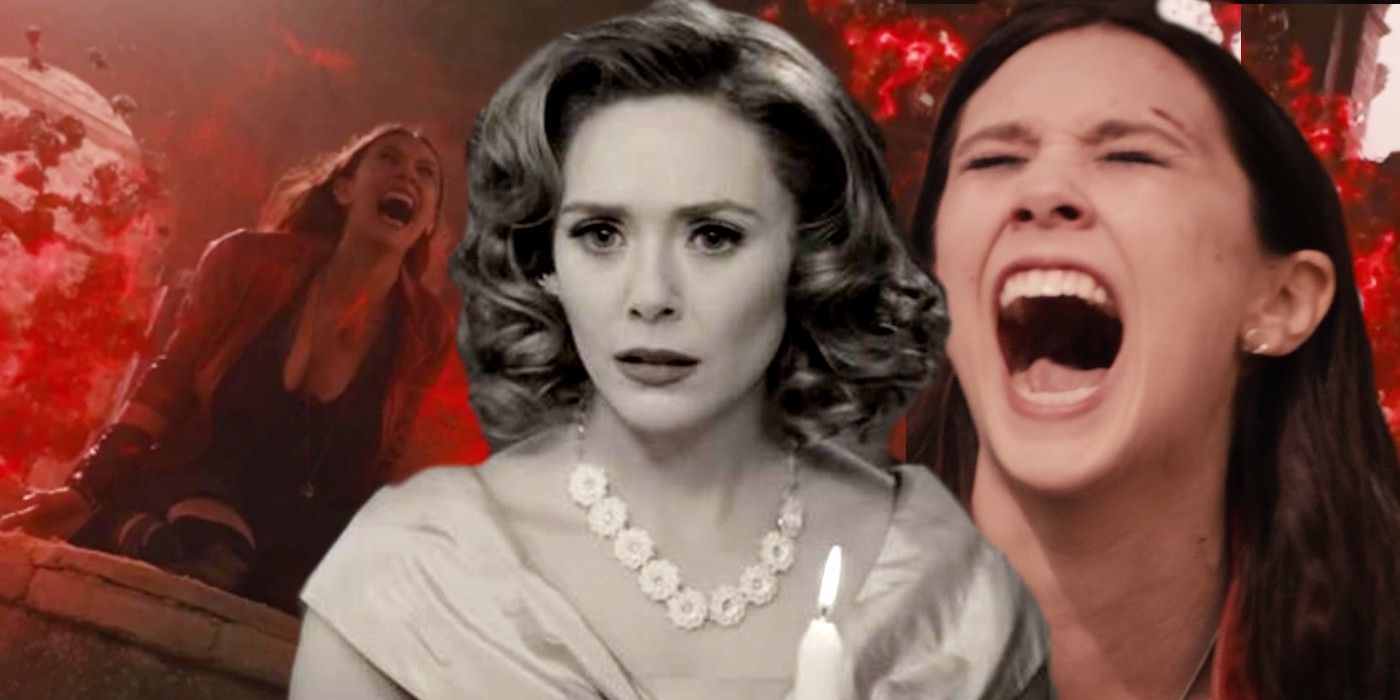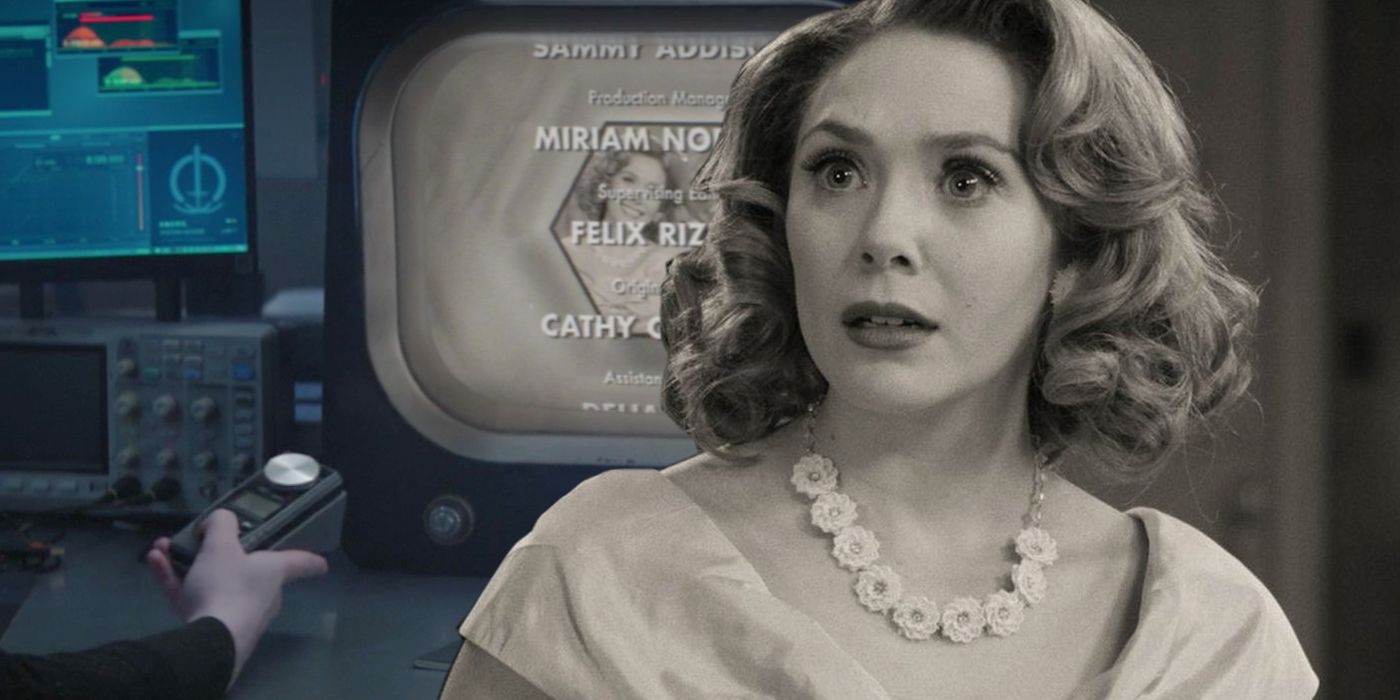
Scarlet Witch's decision to create a fake world made of sitcoms in WandaVision is secretly a heartbreaking testament to her traumatic past. WandaVision, the strangest of Marvel's properties so far, has launched the MCU's Phase 4 in a far more unexpected way than even the most imaginative of fans could have conceived. The Disney+ show is essentially a greatest hits homage to sitcom history, with the twist at the end of episode 2 confirming Wanda is the one creating the strange fake world. The observations of the parodies are very clever and incredibly detailed, but the question of why Scarlet Witch made those specific choices hasn't been entirely addressed.
The first two episodes of WandaVision took in references to classics like I Love Lucy, I Dream Of Jeannie and Bewitched, most of all. They were almost like uncanny valley approximation of those sitcoms, with the characters populating the world - like Wanda and Vision's neighbor Agnes - all feeling slightly unreal or in some way performative. That, of course, is the key here, because WandaVision is all about projection: partly as Scarlet Witch tries to hide what's wrong with her emotionally, but also tries to convince everyone unwittingly wrapped up in her world that everything is real. It seems that questioning that reality is what threatens it.
But why sitcoms? As well as allowing more broad comedy than the rest of the franchise - and thus making WandaVision feel unlike the rest of the MCU - it also offered an idealized, almost "chocolate box" idealism for Wanda's happy ending. The sitcoms of the era would typically be modeled around some version of the traditional nuclear family, and Wanda's attempts to hide from the reality of her trauma would seem to have found comfort in something she sees as perfect and happy. Those sitcoms represent everything that was robbed from Wanda, and heartbreakingly, she has retreated into a world that allows her to pretend she got everything she ever dreamed of. And perversely, she's unable to create the reality in a fully convincing way, confirming the grim truth that she's never really had enough experience of normalcy to play pretend at it properly.

Wanda's past took away everything and her fake world seeks to restore it all. The happy family home when her parents were killed; the chance of a "normal" life where the boss coming over was the greatest stressor after she became one of HYDRA's "miracles"; the marriage and children she and Vision couldn't have, realistically. Particularly when he was killed by Thanos. WandaVision brings Vision back to life as only part of Scarlet Witch's projection: everything else is a specific reaction to all of her past traumas, which is why they seep in to the fake reality even as she tries to keep them out. The Stark Industries toaster reminds her of her parents' deaths and the Strucker watch calls back to when she was experimented on along with Quicksilver. Everything that was designed to hide her from her pain ends up being a sort of pressure chamber of those experiences, waiting to blow.
Fundamentally, the truth of Scarlet Witch's fake reality is that while it seeks to hide from all of those traumas, it actually ends up amplifying them in the absence. Wanda seems to be suppressing those memories, particularly of Vision's death, though there is certainly a degree of awareness when she changes the reality at the end of the second episode, but as with the first episode's joke about Vision's "indestructible head" little reminders are there not just for the audience, but as sign-posts to how thin this layer of reality really is. Cruelly, WandaVision will probably have another sting in its tail as Wanda is forced to accept the most painful reality is the one she has to live in and the construct of her sitcom world is arguably even more dangerous to her and the world.
from ScreenRant - Feed https://ift.tt/3sEzYow



0 Comments